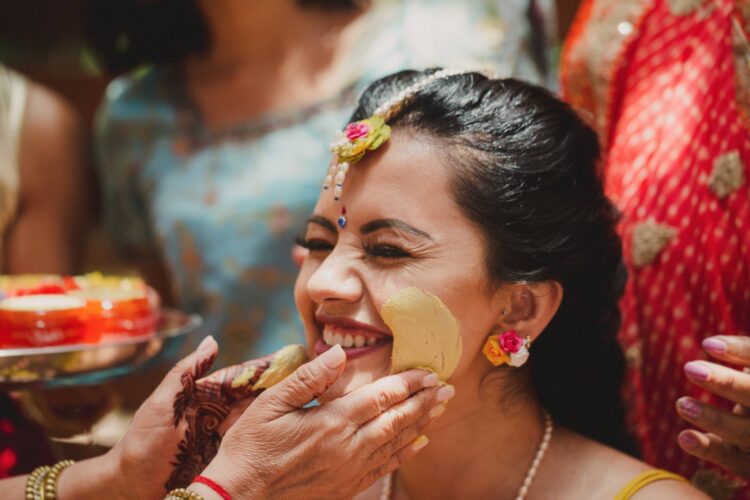Pithi Ceremony: A Colorful and Joyful Indian Wedding Tradition

In the tapestry of Indian wedding traditions, the Pithi ceremony stands out as a vibrant and joyous celebration that encapsulates the essence of love, family, and community. Rooted in the rich cultural diversity of the subcontinent, the Pithi ceremony is a pre-wedding ritual that holds immense significance for both the couple and their families. As a ritual that brings together laughter, music, and an explosion of colors, the Pithi ceremony is a cherished occasion that highlights the unity and jubilation that surround Indian weddings.
Origins and Symbolism:
The Pithi ceremony finds its origins in various regions of India, particularly in the northern states such as Punjab, Gujarat, and Rajasthan. It is often referred to as the “Haldi” ceremony, owing to the use of turmeric paste, or “haldi,” which is a central element of the ritual. The ceremony is steeped in symbolism, as each element used during the ritual holds deep cultural and spiritual significance.
Turmeric:
Turmeric, a golden-hued spice, is not only known for its vibrant color and distinct flavor but also for its medicinal properties. In Indian culture, it symbolizes purity, fertility, and auspiciousness. During the Pithi ceremony, a mixture of turmeric, rose water, and other natural ingredients is applied to the bride and groom’s skin. This paste is believed to cleanse and purify their bodies, giving them a radiant glow for their big day.
Community and Celebration:
The Pithi ceremony is characterized by a sense of togetherness and communal celebration. It is typically held a day or two before the wedding and is attended by close family members and friends. The atmosphere is filled with music, dancing, and laughter as loved ones come together to bless the couple and partake in the festivities.
Traditions and Customs:
The customs associated with the Pithi ceremony may vary across different regions of India, but the underlying sentiment of joy remains constant. In Punjab, for example, the ritual involves the groom’s family visiting the bride’s home bearing gifts, including the ceremonial attire that the bride and groom will wear during the ceremony. In Gujarat, the bride and groom sit on swings adorned with flowers, while family members take turns applying the turmeric paste on their skin.
The Pithi Play:
One of the highlights of the Pithi ceremony is the playful interaction between the couple and their families. The application of the turmeric paste often turns into a friendly, good-natured “fight,” where family members lovingly smear the paste on the bride and groom’s faces. This lighthearted banter creates moments of spontaneity and captures the sheer exuberance of the occasion.
Significance Beyond Ritual:
While the Pithi ceremony is rooted in tradition, it also carries deeper meanings that extend beyond the ceremonial aspect. It symbolizes the blending of two families and the start of a new chapter in the couple’s lives. It reflects the coming together of diverse backgrounds and the celebration of love that transcends cultural boundaries.
Preserving Cultural Heritage:
In a world where traditions are constantly evolving, the Pithi ceremony serves as a timeless reminder of the importance of preserving cultural heritage. It allows younger generations to connect with their roots and experience the beauty of age-old customs firsthand. As modern weddings often incorporate a blend of contemporary and traditional elements, the Pithi ceremony continues to hold its own as an unmissable piece of the wedding mosaic.
Conclusion:
The Pithi ceremony, with its vibrant colors, playful rituals, and deep symbolism, is a testament to the rich cultural tapestry of India. It encapsulates the spirit of unity, joy, and togetherness that define weddings as a whole. Beyond the turmeric paste and the laughter, the Pithi ceremony is a celebration of love, family, and the timeless traditions that connect generations. As couples continue to embark on the journey of marriage, this cherished pre-wedding ritual will undoubtedly remain an integral part of the Indian wedding experience.

